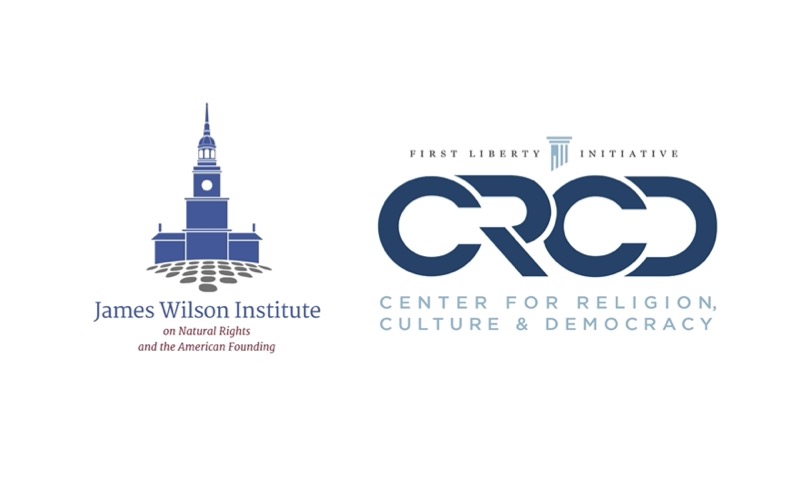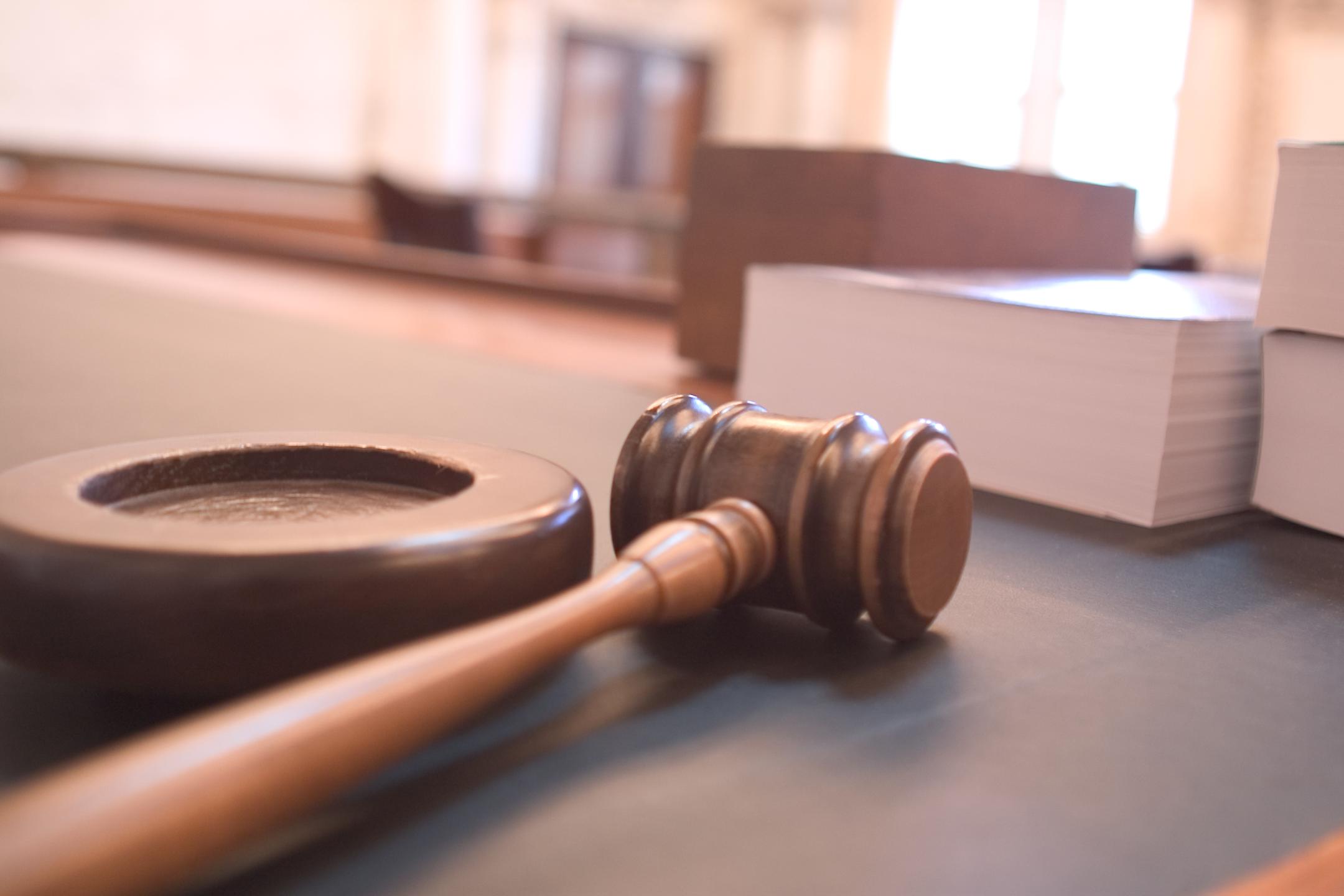
This article is in response to a webinar that the James Wilson Institute cohosted with First Liberty’s Center for Religion, Culture, and Democracy. The webinar featured Profs. Adam Macleod and Robert Miller to discuss the arguments presented in The Episcopal Diocese of Fort Worth v. The Episcopal Church. This article is a summary of the presentation made by Prof. MacLeod.
The question is whether churches and other associations of people have an existence of their own, prior to their recognition in positive law, or are instead mere creations of a political sovereign, entirely constituted by positive law as legal fictions. The answer is that they do have existence of their own. This seems quite obvious to most people. The only difficulty is for scholars and other skeptics, namely how to understand the thing that exists.
Both theoretical and practical implications follow from the answer. Descriptively, we can often ascertain the character of groups by the way they constitute themselves, both internally and legally, for example by examining the corporations, trusts, estates of ownership and other legal artifacts that associations make to secure their internal and external rights and duties. Practically, we have strong reasons not to allow the powerful to reconfigure associations and their legal artifacts arbitrarily, for people form groups and associations for moral reasons, common good ends.
Since at least the rediscovery of Justinian’s Corpus Juris Civilis in the 11th century, the private rights and duties of the Western legal tradition have been shaped by jurists who shared certain convictions: that human beings choose and act freely for reasons, that we find meaning not living moment by moment but instead when we transcend time and place, that we are made to flourish in community, not just in that community that we call the state or nation (though that is important), but first and foremost in those smaller communities within which we realize our most basic and comprehensive good ends, such as business and non-profit associations, schools and universities, estates of co-ownership, and the family.
It’s no accident that the artifacts of our fundamental law reflect these truths about us. In short, we find throughout the law particular specifications of a natural right to associate with other human beings. Here, I will briefly discuss two of those specifications, the right of corporate ownership and the right to divide legal and equitable ownership in a trust. But first, a few words about the natural right to association are in order.
The right of association is natural in three related senses. First, it is fitting to human nature. Wherever the right is secured in law and protected by adequate remedies and sanctions, human beings flourish. Wherever the right is infringed with impunity, we find human beings in poverty and persistent frustration.
Second, the right to associate is a requirement of human reason. We have strong reasons to associate for shared ends and to allow others to do the same because many humans goods can only be realized by cooperating. Powerful people who infringe and suppress the right thus act contrary to justice.
Third, the right to associate is pre-positive. It is not contingent upon, but instead exists independent of, political power and positive law. We find it throughout the fundamental rights of our immemorial common law, and it is one of the natural rights that forms a precondition to the pursuit of true and substantial happiness. When officials infringe the right to associate or fail to remedy its infringement, they undermine their own authority. They destroy the reasons we have to consent to their continued governance.
To begin, consider a story. It’s about a group of very earnest Scottish Presbyterians who were given a whimsical name. The “Wee Frees” were part of the Free Church of Scotland, a church founded to distinguish itself from the theological innovations of the United Presbyterian Church of Scotland. When a majority of the Free Church decided to reunite with the United Church, the minority faction asserted ownership of the Free Church’s property. Derisively called the Wee Frees and scorned by powerful elites, they nevertheless succeeded in convincing the House of Lords that they were the rightful owners. The Lords, unconstrained by our separation of church and state, were content to observe that it was the Wee Frees who wanted to preserve the Free Church’s theological distinctives, however quirky and outdated those convictions might seem. The Wee Frees were, in that sense, the true Free Church of Scotland and therefore rightful owners of its property.
The case of the Wee Frees motivated a spirited exchange among several eminent jurists and scholars of the day, including A.V. Dicey, Frederic Maitland, and John Neville Figgis. The question, as Figgis put it, is concerned “with the nature of human life in society.” Figgis continued,
In other words, is the life of the society to be conceived as inherent or derived? Does the Church exist by some inward living force, with powers of self-development like a person; or is she a mere aggregate, a fortuitous concourse of ecclesiastical atoms, treated it may be as one for purposes of convenience, but with no real claim to a mind or will of her own, except so far as the civil power sees good to invest her for the nonce with a fiction of unity.
The correspondents differed in their answers to this question. But all of them agreed that to understand the question was also to address related questions about the character of corporations and trusts. For example, the question lies at the heart of a puzzle of jurisprudence how a company’s legal capacity as owner of its property is separate from the individuals who ultimately comprise the company’s membership. It also lies at the bottom of a trustee’s fiduciary duties to equitable beneficiaries, which are not reciprocal. As Maitland put it, the question of “the personality of the organized group” is tied up in the question why corporations have separate legal existence from their members and in the question why the trust beneficiary is the “spoilt child of English jurisprudence.”
Maitland offered a clear answer. Reflecting on Dicey’s earlier observations about the common-law right to associate, Maitland came to the conclusion that, besides natural persons (human beings) and fictional persons, “the law knows persons of another kind,” juristic persons including the trust and the corporation, which it treats as a “right-and-duty-bearing unit,” like a human being in some respects and like a legal fiction in others, but also importantly different from both.
Fast forward to last year, when the Texas Supreme Court rendered judgment in the case The Episcopal Diocese of Fort Worth v. The Episcopal Church. The facts are a bit complicated, but in short the Diocesan corporation (technically an unincorporated association treated as a corporation for certain purposes under Texas positive law) holds all real and personal property of the church in trust for the benefit of its parishes, unless a parish leaves the Diocese, in which case the property returns to the Diocese as such. A few years ago, The Episcopal Church (“TEC”), of which the Diocese had been a part, attempted to assume control of the Diocese by placing its own agents in offices of power within the Diocesan corporation and by claiming to be the true beneficiary of the trust.
The Diocese precipitated TEC’s attempted hostile takeover when, in 2007, it began to disaffiliate itself from TEC. Earlier, TEC motivated that disaffiliation, and many other disaffiliations around North America, when it departed from essential, historic doctrines of the Christian faith, such as the authority of Hebrew and Christian scriptures and the definition and meaning of marriage. That departure put TEC out of step with nearly all of the worldwide provinces of the Anglican Communion, and out of fellowship with many.
The Diocese claimed ownership both under the Diocesan corporation and trust and as the true church of the Anglican Communion within greater Fort Worth. The Episcopal Church asked the Texas courts to ignore the Diocesan corporation and trust instruments and to defer to its own judgment that its canon law justified a takeover of the corporation and trust because the Diocese had been unfaithful to TEC’s national convention and bishops.
The First Amendment (quite reasonably) prohibits secular courts from predicating their judgments on theological and doctrinal inquiries, and thus from examining the moral and theological purposes of church corporations, as the House of Lords did in the Wee Frees case. State courts are permitted to resolve church property disputes by one of two methods. They may either defer to the highest tribunal within a church or interpret neutral legal instruments of the church that determine ownership, where such instruments exist. Declining The Episcopal Church’s invitation to defer to the national convention’s interpretation of its canon law, the Texas Supreme Court followed black-letter law and awarded judgment to the Diocese.
The Fort Worth diocese case gives us a fresh perspective on that old question that the English jurists considered a century ago. In Texas, the legal artifacts seem to have worked. They preserved the Diocese as a body of Christians who want to remain faithful both to orthodox Christian teaching and to the authority of the broader Anglican communion. The Episcopal Church, which rejected those authorities and thus separated itself from all but two of the global Anglican provinces, was thwarted in its attempt to transform the Diocese into something other than what it is, to fundamentally alter its reasons for being. The judges had no reason to look beyond the legal artifacts themselves.
The success of the legal artifacts in the Fort Worth case, and the failed arguments of The Episcopal Church, can teach us something important about the ends of well-designed legal fictions. In short, when well formed, corporations and trusts can protect and enable the agency of associations and protect them from both internal and external threats. We also are now in a better position to answer Figgis’s question because jurisprudential scholars have recently given us new insights, evidence, and inquiries. Specifically, we have new evidence bearing upon the old question about corporate personhood. And we have new questions that shed light upon the old evidence about the nature of trusts.
Many of the earlier English jurists operated from a perspective shaped by social Darwinism. They thought of corporate identity in organic terms. This frustrated their inquiries in all sorts of ways that we do not have time to consider today. But fortunately, we need not consider them. For in the last 20 years analytical philosophers have given us a new way to understand the personhood and moral agency of groups and associations.
The basic concept comes from the philosopher Michael Bratman. It is the idea of interlocking intentions. Let us approach the concept with a simple example. Suppose that Stan and Bob are both runners who happen to live in the same neighborhood. They occasionally pass each other while running in the mornings before work. Eventually they decide to start running together. This requires them to coordinate. They must agree when and where to meet, how often to run, how far, at what pace.
Now they derive all sorts of benefits from this cooperative venture; motivation, new insights and training techniques, and friendship. Other people may join them for those reasons. At some point the group develops a life of its own, such that if any one of its members fails to show up some morning, the group, which is now identifiable as a group and not a mere aggregation of its individual members, continues to exist and to meet for the purpose of running.
When Stan and Bob happened to pass each other in the neighborhood, they had similar intentions but they were parallel to each other. Now their intentions are shared and mutually dependent. Stan shows up to run in part because Bob is going to show up to run, and vice versa, and each would be letting the other down if he don’t show up ready to run. This mutuality and sharing of plans has transformed Stan and Bob in an important way. It has shaped their motivations, their planning and reasons, their commitments. And as the group scales up, the group itself takes on the agency for shaping those internal parts of our identity.
Now scale this example up again for more complicated associations such as family businesses, charitable organizations, and religious associations. At some point in the lives of these associations, the interlocking intentions of their various members become a sum that is greater than the total of the parts. The association develops standing plans and intentions that are independent of the particular motivations and intentions of individual members, perhaps even the founding members. Anyone who has ever founded a new group or entity only later to discover that the group has a mind of its own can relate to this reality.
The new moral agent that is constituted by the interlocking intentions of the members is capable of bearing legal obligations because it is capable of having reasons, and therefore of having rights and duties. This is the sense and intelligibility of Maitland’s reference to corporate persons as right and duty bearing units. The unit exists quite apart from any formal legal status that the sovereign may allow to be conferred upon it as a matter of positive law or legal judgment.
Turning to trusts, we now have new questions that bring order and clarity to old evidence. In the last couple of decades, property theorists have become increasingly interested in the question whether use, alienability, exclusion is the core or essence of property. We recognize that use may be viewed as more essential or important from one perspective, call it the internal point of view, while the right to exclude may be perceived as the most important thing about property from a different perspective, call into the external point of view, and the right of alienability may appear most important from a third perspective, call it the economic point of view.
With this framework we can now see why Maitland was so interested in the common law concept of use. He was interested in the interior life of the group or association that exercises property ownership together, cooperatively, for a common good that is not reducible to the individual preferences of the members. His focus on use was secondary to his focus on the internal point of view of the group that exercises dominion within property ownership.
Maitland taught us that use in the common law has a much more expensive meaning than it does in the civil law tradition. The common law term “use” is derived from the law French word oes. That, in turn, is derived not from the Roman term usus but rather from the Latin word opus, for work. Any student of common-law jurisprudence will immediately recognize the significance of this insight. For common law jurists such as Hale and Blackstone, the core and origin of property is not self-ownership in a state of nature but rather is God‘s delegation of dominion to Adam and Eve and their children in equal shares. As the jurists make clear, the office of dominion is an office of stewardship, which has lots of benefits but is primarily concerned about responsibility to labor on the earth and to order it well. From this perspective, use-as-work is the most essential aspect of property.
And here is the solution to Maitland’s puzzle. Why is it that beneficial use is the spoiled child of English jurisprudence, while exclusion and alienability are treated as derivative and secondary? The answer is that beneficial use is the whole purpose of having private property institutions. It is difficult to see this when use, exclusion, and alienability are all wrapped up in the fee simple absolute, the comprehensive estate of ownership. It becomes easier to see this when they are separated by a trust.
Who uses the property held in trust, and for what ends they use it, determines the character of the trust. The powers of the trustee are derived from the fiduciary duties of the trustee to enable and protect the beneficial use. The office of trustee is entirely derivative from and contingent upon that beneficial use.
Remember another lesson that Maitland taught us. Clever lawyers developed the trust in the fourteenth century to overcome the injustice of primogeniture, which mandated that the entire res descend to the eldest son, and thus prevented an owner from providing for his other children and for potential charitable beneficiaries of his generosity. The trustee’s duty to deliver use to the settlor’s intended beneficiaries was enforceable in equity as a matter of conscience even though title and exclusion must pass as a matter of law to the eldest son. The central concern of the owner-settlor, the purpose to satisfy the requirement of equity and natural justice that the arbitrary rules of law frustrated, was to ensure that use was passed to those who could benefit from it and work to make their use beneficial for others.
A trustee who asserts the power to determine use is thus breaking faith with the purpose of the trust and acting contrary to what conscience requires. When the Episcopal Church claimed to be the true beneficiary of the property held in trust by the Diocese of Fort Worth for the benefit of its parishes, it introduced into its argument a contradiction. It is not difficult to see how TEC’s assertion of priority is contrary both to the fiduciary duties of the bishops of the national convention and to the purposes for which the trust exists. The Son of Man came not to be served but to serve, and he commands his apostles to act likewise. To fail to steward the good ends for which the Diocese holds bare legal title, indeed to act contrary to those ends, is to abdicate the authority entrusted to the Diocese and the church’s bishops.
The Diocese of Fort Worth is a real moral agent, whose existence and personhood does not depend upon the positive laws of Texas nor the judgments of the episcopal bishops about the meaning of their own canon law. In this case, the positive laws of Texas declared and secured the ancient artifacts of corporate and trust ownership. The lawyers of the Diocese had done their job well. The artifacts served their proper ends.
We now have fresh reasons to affirm Maitland’s speculations about corporations and trusts. The corporate form wraps itself around and approximates the boundaries of an existing, organized group that has true moral and legal agency. And trusts exist to secure the beneficial use of persons, including group persons. Lawyers, corporate officers, trustees, and public officials can and should be mindful of the ends of corporate and trust ownership even then they have legal and constitutional duties not to inquire too closely into the purposes or beliefs of particular group owners. When natural persons organize standing groups around common ends they form natural right-and-duty-bearing units and, in the words of Maitland, “if the law-giver will not openly treat them as such, he will misrepresent, or, as the French say, he will ‘denature’ the facts: in other words, he will make a mess and call it law.”




